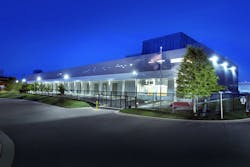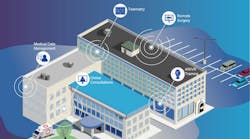In this week’s Voices of the Industry, James Leach, Vice President Marketing at RagingWire Data Centers, talks about the flexible solutions and enhanced service model of today’s new colocation data centers.
Vice President Marketing at RagingWire Data Centers
Henry Ford is famous for saying, “Customers can buy a Model T car in any color they want, as long as it’s black.” His point was valid. For businesses to offer high-quality, low-cost products, they need to standardize features and optimize production. But what is good for the business is not always good for the customer.
Early colocation data centers were like Henry Ford’s Model T.
– For the large enterprise, you can have a data center in any size you want as long as it’s 1.2 MW. If you need 1.6 MW, you get two 1.2 MW buildings and some “extra”.
– For the interconnect customer, you can have a custom built data center solution as long your racks are in 2.4, 4, or 6 kW chunks. You need an 8 kW rack? Buy two 4kW racks.
– For the high availability customer, your only choice is dedicated infrastructure whether you can afford it or not.
Henry Ford would have hated the new colocation data centers. Why? Because the old rigid data center design and limited colocation support model are being replaced with flexible solutions and exceptional service.
Custom Builds with Pre-fab Economics
The hyperscale cloud providers are building custom servers, storage devices, and network gear. They are writing custom software to automatically provision capacity and optimize performance. They are looking for data center providers that can build to fit their unique requirements while leveraging the cost savings of modular construction.
A Range of Sizes and Locations
Data center customers come in all sizes. On the high-end, they want vaults with a range of power options – 1 MW, 2 MW, and 5 MW. In the mid-range, they need cages with custom options for lighting, cooling, and physical security. Rack solutions now offer vertical growth options from standard 8 ft. designs to 9 ft. and even 10 ft. cabinets. Most data center deployments are part of a global infrastructure. Data center providers must offer locations around the world to balance workloads, reduce network latency, and provide application resiliency.
Adaptive Power Configurations
It’s an “N game” in data centers today. You need to have options for N, N+1, and 2N+2 to meet different levels of application availability. Plus you need to be able to scale up power over time within a given footprint as rack density increases and move power throughout a facility to address high density requirements.
Massive Scalability with Available Inventory
Application usage is growing which is driving the need for data center scalability at the hub and in the spokes. At the hub, wholesale data center campuses are growing to over 1,000,000 square feet. On the edge, hundreds of small-footprint, “lights out” facilities will become the norm. The key is a just-in-time inventory model so that there is supply to meet customer demand while minimizing up-front capital expenses for the data center company.
Dedicated and Shared Infrastructure
Customers want choice in their infrastructure architectures. At times, they are willing to pay more for dedicated equipment so that they don’t have to worry about whether they have good neighbors or bad. Other times, they want the costs savings of shared infrastructure as long as there are virtual dividers to segment users and portals to monitor usage.
Full Service and Support
Service and support are increasingly about location, skills, and bundled pricing. Data centers are staffing onsite teams of IT technicians to help with customers’ basic maintenance, problem determination, and rack/stack. In-house electricians are helpful to install power whips and modify cabling. These services are bundled in with the colocation pricing for consistent month to month billing without usage spikes. You’d be surprised how important secured shipping and receiving is to a data center customer and no one wants to pay extra for after-hours deliveries.
Solution Selling and Contracting
Most of the data center dialog is about technology, but we hear all the time that some data center companies are harder to do business with than others. Data center sales professionals are getting smarter about end-to-end IT solutions. They can still talk about “ping, power, and pipe,” but they can also work with you on an integrated data center solution. Contracts are being written to support power ramps and capacity balancing without requiring modified terms and conditions. Are there lease and non-lease accounting options in your contracts? Are negotiations fair and reasonable, looking out for the interests of the customer and the supplier as part of a win/win partnership?
Telecom Interconnects, Cloud Access, and Internet
A data center without a network is an island. Does the data center have a good selection of onsite telecommunications providers and are interconnects installed in a timely manner and at a reasonable price? Are there options for direct connections to major cloud providers and interconnections to an ecosystem of cloud and SaaS providers? Is there a blended Internet service that provides carrier redundancy and diversity?
Today’s world-class colocation data centers offer a proven and reliable design with options that can be configured to meet unique customer requirements. The days of the “Model T data center” will soon be behind us.
James Leach is Vice President Marketing at RagingWire Data Centers. Previously he was a global marketing executive at IBM, Savvis, Internap, Neustar, and Harris Corporation. Over his career, James was part of the core business team developing internet, telecommunications, and infrastructure solutions, including DNS, web domains, performance monitoring, vertical industry solutions, virtual networks, content delivery networks, cloud computing, and data centers. At RagingWire, James is the overall marketing leader responsible for a data center portfolio of 1.2 million square feet and 97 MW in the United States and a global data center platform of 140 locations as part of the Nexcenter brand of NTT Communications.





